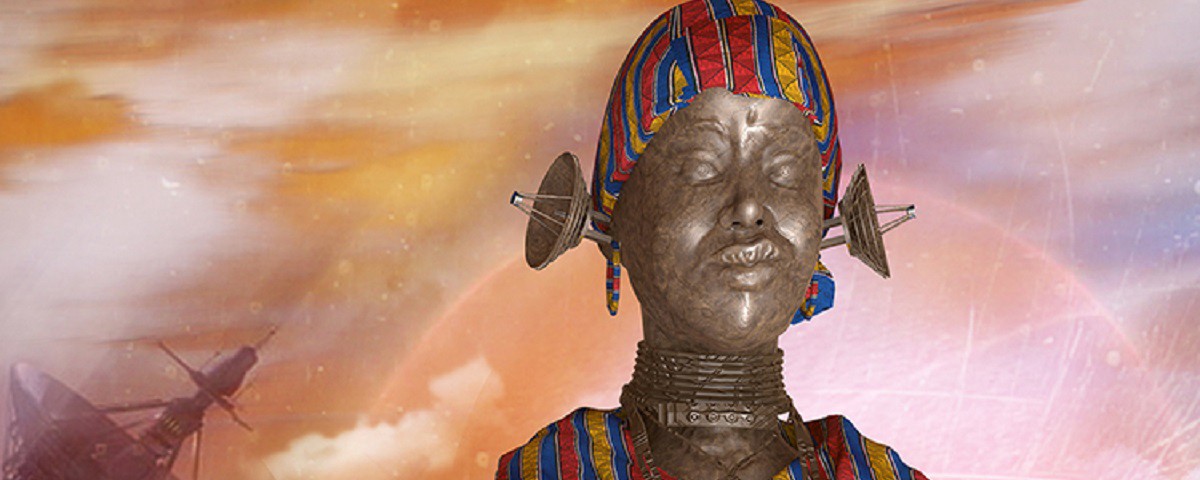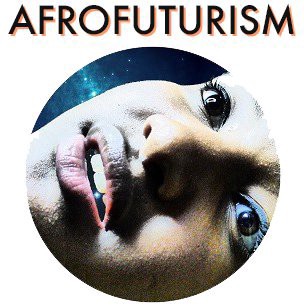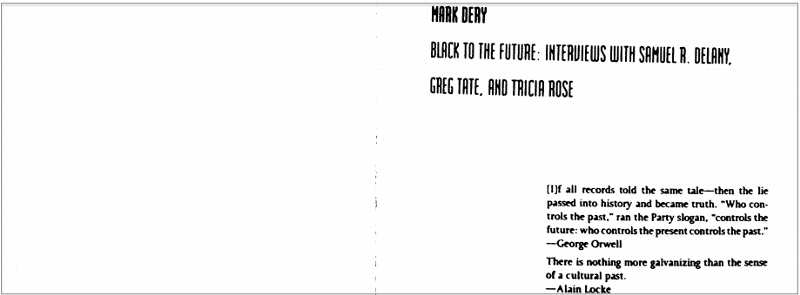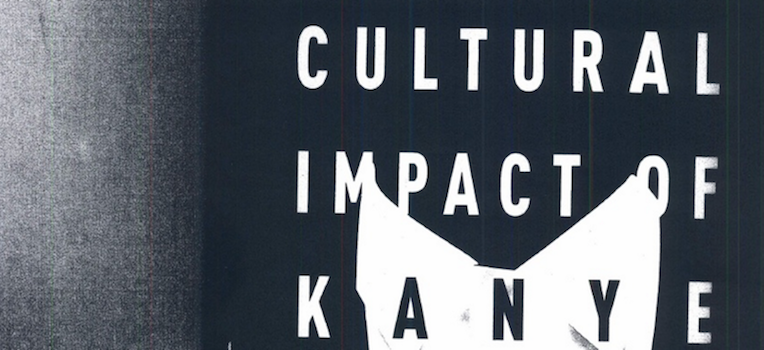

Just what is Afrofuturism, and what is all the fuss about? It might seem like it’s a recent movement, but there’s actually a ton of resources out there if you know where to look.

“There’s going to be a point in time where the android is going to be the other; homosexuals were the other, black people were the other, and the android will be the other. Man has to build these robots because man has to be in control.
Also, I think androids are sexy.”
–Janelle Monae, in an interview with Pitchfork, 2010

The Academics
Afrofuturism began, like so many other ideas, as a critical theory–a framework for thinking about the world in a different way. And the first person to officially coin the term “Afrofuturism” was critic Mark Dery, whose 1993 essay “Black to the Future” affirmed a connection between the black experience and science fiction, reinvigorating a now global discussion and aesthetic across media that is as vibrant and diverse today as ever.

Another theorist whose work is a touchstone for discussions of Afrofuturism is British-Ghanaian writer Kodwo Eshun. His 1998 book More Brilliant Than the Sun explores visions of the future in Afrofuturist music by artists like Sun Ra, while his essay “Further Considerations on Afrofuturism” from 2003 asks how the field will change throughout the 21st century:
Much like Eshun, Adriano Elia sees Afrofuturism as a transdimensional genre which employs and overturns all the dominant conventions of whichever media the creative chooses to express their vision:
Although originated from analysis of African-American science fiction, Afrofuturism is much broader, a part of African and black futurism and speculative thought. What are the political implications of Afrofuturism as a genre of the African diaspora? Pamela Phatsimo Sunstrum digs deeper in her paper on Afro-mythology and African Futurism.
And if there’s an African-American artist whose use of Afrofuturist imagery demands further analysis right now, it’s Kanye West–as this essay by Reynaldo Anderson details (click the picture):


The Articles
Maybe you want something less academic, though. Sometimes not everything is best laid out in terms of “isms.” Here are some more mainstream articles to help elucidate the topic:
- “Afrofuturism: Where Space, Pyramids and Politics Collide“
- “Afrofuturism to everyday futurists: new kinds of artists, power & tech“
- “Black Futures Matter: Redefining Afrofuturism“
- “Afrofuturism, Science Fiction, and the History of the Future“
- “Did you say Afrofuturism? On labelling art“
- “Playing a Minority Forecaster in search of Afrofuturism: where am I in this future, Stewart Brand?“
- “What Is Afrofuturism?“

The Books
So, you’ve read the basics. Here’s some meatier stuff that delves deeply into Afrofuturism and its abundant possibilities for influencing everything from art to social justice:
- Afrofuturism: The World of Black Sci-Fi and Fantasy Culture
Ytasha L. Womack - Afrofuturism 2.0: The Rise of Astro-Blackness
A collection of pieces edited by Reynaldo Anderson - Octavia’s Brood: Science Fiction Stories from Social Justice Movements
Walidah Imarisha

The Videos
People have been talking about Afrofuturism even before the movement had a name, and no figure was as visionary in the 20th century as jazz artist, band leader, poet, and philosopher Sun Ra. Here, he presents a talk as part of the course he taught in 1971 at UC Berkeley.
One of the most notable thinkers in the field today is Ytsasha Womack. Below, she offers the keynote speech, “Afrofuturism as Creative Empowerment,” at the Feminist Technics, Queer Machines: Inventing Better Futures conference at IGSF McGill in 2015.
Here’s curator Ingrid LaFleur giving a TEDx talk about the visual aesthetics of Afrofuturism.
Filmmaker Wanuri Kahiu lays out Afrofuturism’s place in popular culture.
Yumy Odom, Li Sumpter, Ozzie Jones, and Caroliese Frink Reed take part in a fascinating roundtable discussion of Afrofuturism in media and myth. The discussion was moderated by Rasheedah Phillips, director of the Afrofuturist Affair and produced by Jos Duncan, director of Griot Works.

The Sites You Need to Read
OK, now that you’ve done the groundwork, you want to keep track of the conversation happening from here, forward. These are the sites to read, the people to follow, and what to add to your RSS reader or Instapaper so that you’re fully immersed in Afrofuturist thinking:
- THE AFROFUTURIST AFFAIR
- afrofuturism.net
- Afrofuturism: The New Black
- Afrofuturism: The World of Black Sci Fi and Fantasy Culture
- AfroCyberPunk
- Octavia E. Butler Legacy Network
- Poetic Artist Quentin Vercetty
- Nalo Hopkinson
- maker faire africa (@makerfairafrica)
- Nnedi’s Wahala Zone Blog
- Ben Okri


How We Get To Next was a magazine that explored the future of science, technology, and culture from 2014 to 2019. This article is part of our collection of conversations about Afrofuturism, curated and edited by Florence Okoye of Afrofutures UK. Click the logo to read more.
